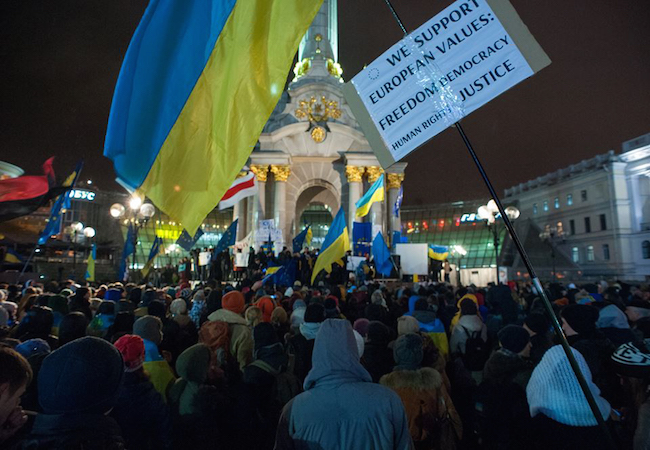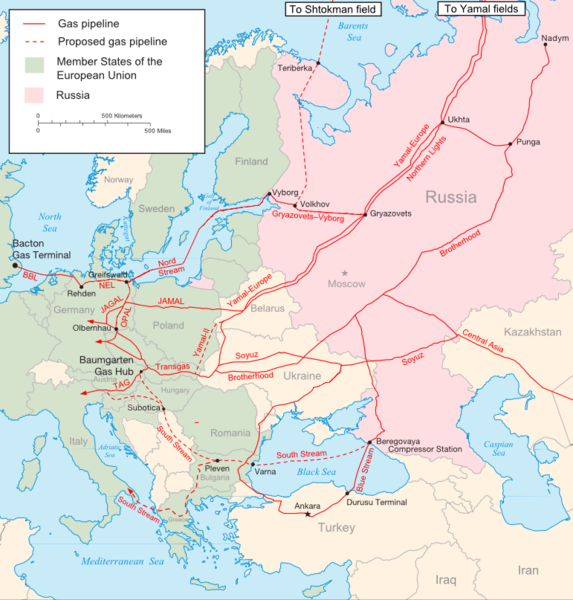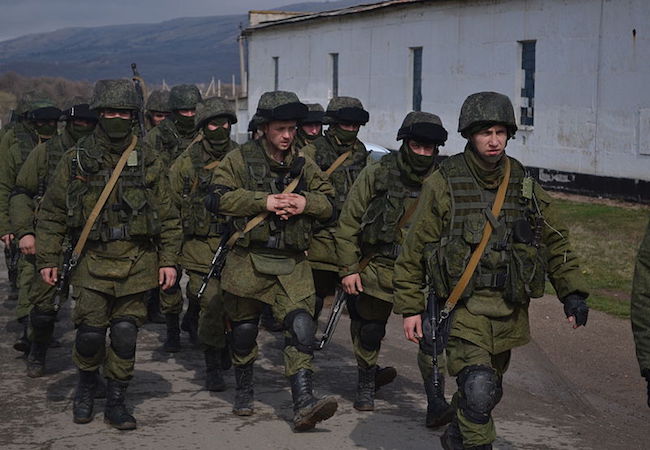The Ukraine-Russian conflict: Hidden motives that are fueling this endeavor

By David McDonald
Overview
The Ukraine-Russian conflict has been the bloodiest European endeavour since the wars over the former Yugoslavia in the early 1990s. Misconstruity amongst the Ukrainian government towards handling social issues within their Eastern fronts, as well as glaring economic motives on both sides, are the driving forces behind this re-emerging conflict.
After the collapse of the Soviet Union in 1991, Ukraine and Russia retained close economic and social ties. However, conflict began almost immediately after. Conflicts of interest include Ukraine’s significant nuclear arsenal, the division of the Black Sea fleet, various gas disputes as well as political and social dissensions. This situation is complex, and there are far too many angles to take when approaching this topic for just one article, so I’m going to keep it simple and focus on what I believe are the main drivers behind Russian-intervention in Ukraine: Oil and social sovereignty.
Hidden Economic motives behind the Ukraine-Russia Conflict
I use the term ‘hidden’ loosely, because with any given conflict between nations, it must be inferred that there is some economic gain to be achieved, otherwise there would be no point in fighting.
For Russia, the economic gain lies in control of oil that flows through Ukraine to the European Union. Resource scarcity, and competition to dominate Eurasian energy corridors are the main driving forces for Russian engagement in Eastern Ukraine, as well as Syria, but that’s a story for another day.
Ukraine is undoubtedly one of the most geostrategically important countries within the Eurasian hemisphere. It lies at a cross-roads between the dominant-European Union economy and Russia, as well as having easy access to the Middle East and even Asia.
Amongst the many pipelines that run through Ukraine, the $21.6 billion South Stream natural gas pipeline – which stretches nearly 1,500 miles – is a large motivator for Putin to be engaged in Ukraine right now.
The pipeline is core to the larger battle being fought over Europe between Moscow and Washington. It may even have been a motivation behind Russia’s annexation of Crimea.
What makes this pipelines so important? It aims to connect Russia’s gas reserves – the world’s largest – to the European market. Europe currently relies on Russia for about 30 percent of its natural gas, 80% of which travels through Ukraine. This pipeline ultimately aims to strengthen Russian economic ties with the EU.
Russia-Ukraine Gas Disputes
To understand the idea of the South Stream pipeline, we must venture back to the Russia-Ukraine gas disputes that lasted from 2005 – 2010. The dispute began in March 2005 over the price of natural gas supplied and the cost of transit. During this conflict, Russia claimed Ukraine was not paying for gas, but diverting that which was intended to be exported to the EU from the pipelines. Ukrainian officials at first denied the accusation, but later Naftogaz admitted that natural gas intended for other European countries was retained and used for domestic needs.

The dispute reached a high point on January 1st 2006 when Russia cut off all gas supplies passing through Ukrainian territory. A preliminary agreement between Russia and Ukraine was achieved three days later, and the supply was restored. The situation calmed until October 2007 when new disputes began over Ukrainian gas debts. This led to reduction of gas supplies in March 2008. During the last months of 2008, relations once again became tense when Ukraine and Russia could not agree on the debts owed by Ukraine.
In January 2009, this disagreement resulted in supply disruptions in many European nations, with eighteen European countries reporting major drops in or complete cut-offs of their gas supplies transported through Ukraine from Russia. In September 2009 officials from both countries stated they felt the situation was under control and that there would be no more conflicts over the topic, at least until the Ukrainian 2010 presidential elections.
This leads us into our next quarry; the political tensions between Ukraine and Russia
Ukraine politics deeply intertwined with Russia’s – A melting point for conflict
Political tensions between the two nations built with the election of Viktor Yushchenko – an informal leader of the Ukrainian opposition coalition and not as Pro-Russian as his predecessor, Viktor Yanukovych. Russia was not pleased by the Orange Revolution of 2004, which saw the Ukrainian populist Viktor Yushchenko elected president instead of the pro-Russian Viktor Yanukovych. The Revolution spawned out of a general conspicuity of electoral fraud within the Ukrainian Government.
Moreover, Ukraine continued to increase its cooperation with NATO, deploying the third-largest contingent of troops to Iraq in 2004. Tensions with Russia under Yushchenko’s leadership built (as signified by the gas disputes) and did not cease until pro-Russian president, Viktor Yanukovych, was elected in 2010.
Upon Yanukovych’s election, Russia felt that many ties with Ukraine could be repaired. Prior to this, Ukraine had not renewed the lease of Black Sea Naval base at Sevastopol, meaning that Russian troops would have to leave Crimea by 2017. However, Yanukovych signed a new lease and expanded allowable troop presence as well as allowing troops to train in the Kerch peninsula.
Many in Ukraine viewed the extension as unconstitutional because Ukraine’s constitution states that no permanent foreign troops shall be stationed in Ukraine after the Sevastopol treaty expired, however, knowing that Yanukovych was pro-Russian, this shouldn’t have come as a surprise. Yulia Tymoshenko, the main opposition figure of Yanukovich, was jailed on what many considered trumped up charges, leading to further dissatisfaction with the government. In November 2013, Viktor Yanukovich declined to sign an association agreement with the European Union, a treaty that had been in development for several years and one that Yanukovich had earlier approved of. Yanukovich instead favored closer ties with Russia.
Yanukovych’s reign consisted of much more controversy proceeding this. It began with the Euromaidan movement, which saw public protests in Kiev’s city square, demanding closer European Integration. The scope of the protests expanded, with many calls for the resignation of Viktor Yanukovych. These protests led to the 2014 Ukrainian Revolution.
The Revolution consisted of a series of violent events in February of 2014. Involved were riot police, violent protests, and unknown shooters, among others. The protesters took control of government buildings in the capital city of Kiev, along with the city itself. As the police abandoned their posts across the capital Kiev and the opposition established control over key intersections and the parliament, President Yanukovych fled Kiev for Kharkiv in the east of Ukraine, where he traditionally has had more support.
After this incident, the Ukrainian parliament voted to restore the 2004 Constitution of Ukraine and remove Yanukovych from power. A vote on the resolution that stated that Yanukovych “is removing himself [from power] because he is not fulfilling his obligations” emerged 328–0 in support. The vote was 10 short of three-quarters of the Parliament members, the requirement of the Constitution of Ukraine for impeachment. Yanukovych stated that the vote was unconstitutional because of this issue, and refused to resign. Politicians from the eastern and southern regions of Ukraine (majority are pro-Russian), including Crimea, declared continuing loyalty to Yanukovych.
One of the first issues the parliament approached was that of the language, annulling a bill that provided for Russian to be used as a second official government language in regions with large Russian-speaking populations occupied primarily in the South-Eastern regions of Ukraine. The parliament adopted a bill to repeal the 2012 law on minority languages, which protected the status of languages other than Ukrainian. The proposal alienated many in the Russian-speaking regions of Ukraine and a few days later, on 1 March, acting President Oleksandr Turchynov vetoed the bill, effectively stopping its enactment.

Russia’s Interest In Crimea
Days after Ukrainian president Viktor Yanukovych fled the capital of Kiev in late February 2014, armed men opposed to the Euromaidan movement began to take control of the Crimean Peninsula. After the occupation of the Crimean parliament by unmarked troops who were suspected to be Russian militia, the Crimean leadership announced it would hold a referendum on secession from Ukraine.
This heavily disputed referendum was followed by the annexation of Crimea by the Russian Federation in mid-March. Ukraine and most of the international community refused to recognize the referendum or the annexation. On 15 April, the Ukrainian parliament declared Crimea a territory temporarily occupied by Russia.
Since annexing Crimea, the Russian government increased its military presence in the region, with Russian president Vladimir Putin saying a Russian military task force would be established there. In December 2014 the Ukrainian Border Guard Service announced Russian troops would begin withdrawing from the areas of Kherson Oblast. One of such villages occupied by Russian troops was Strilkove, Henichesk Raion, located on the Arabat Spit, which housed an important gas distribution centre.
Russian forces stated they took over the gas distribution center to prevent terrorist attacks. This reasoning is remarkable in the most ludicrous way. Russian media sources are keen on covering up their true intentions of invading Ukraine – which is oil – and do so by using ‘Terrorism’ as a media outlet. Russian forces then withdrew from Kherson, marking a brief end to nearly 10 months of Russian occupation of the region.
Renewed Conflict In Ukraine
On August 8th, 2016 Ukraine reported that Russia had increased its military presence along the demarcation line. Proceeding this, border crossings were closed. On August 10th, Russia claimed two servicemen were killed and 10 injured in clashes with Ukrainian commandos in Armyansk on August 7, and that Ukrainian operatives had been captured.
Putin has accused Ukraine of turning to the “practice of terrorism,” for simply defending their land. Ukrainian President Poroshenko called the Russian version of events “equally cynical and insane”. The U.S. denied Russia’s claims, with its ambassador to Ukraine stating “The U.S. Government has seen nothing so far that corroborates Russian allegations of a “Crimean incursion”.
Ukrainian president Petro Poroshenko warned that Russia was preparing for a full-scale invasion of Ukraine, something that Europe is too weak to prevent it from doing. However I will argue that this statement is nothing more than media propaganda, to try and sway the Ukrainian populace in a direction that favours NATO alliances.
Conclusion
Military conflict between Ukraine and Russia has ceased recently, but tensions between the two nations remain. Russia will continue to push for dominance within Eastern Ukraine at least on a political, economic, and social scale, in order to avoid further casualties. The proposition of the South Stream natural gas pipeline is one that is important to Putin; he understands that in order for Russia to have continued economic prosperity with the Eurasian economies, he must secure natural gas exports.
Knowing Putin’s intentions, one cannot exclude all chances for future conflict – it is almost inevitable. Ukraine is ethnically torn between East and West, and Putin wants to capture the pro-Russian west populace of Ukraine, as well as the land and money that comes with it. If conflict in the region continues, expect Putin to use possible threats of terrorism as a backbone for promoting pro-Russian media coverage.
The conflict between these two countries is complex. Their history leading up to this point has led to vastly differing ideologies on politics, language, religion, and social status. Including economic forces, all of these variables come into play with this issue, which is why it is so difficult to understand, and even more perplexing to completely solve.
As a curious onlooker, I am eagerly awaiting what will happen next between Ukraine and Russia, because the implications affect us all.
Ukraine. The parliament adopted a bill to repeal the 2012 law on minority languages, which protected the status of languages other than Ukrainian. The proposal alienated many in the Russian-speaking regions of Ukraine and a few days later, on 1 March, acting President Oleksandr Turchynov vetoed the bill, effectively stopping its enactment.




